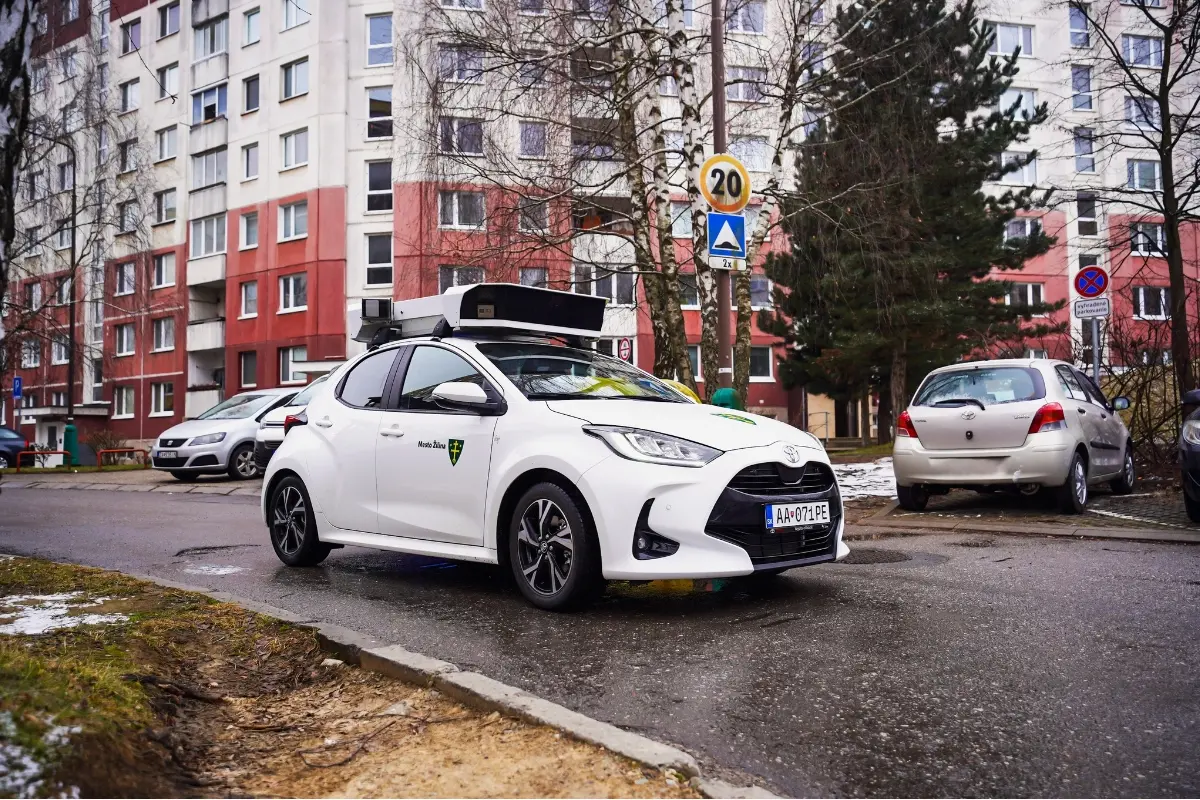The city of Žilina has introduced parking regulation in the first city district, specifically in the Hájik housing estate, effective from 1st January 2025. The introduction of the parking policy is based on the city’s long-term efforts to regulate parking on its territory in order to improve the comfort of residents, reduce illegal and harmful parking and, last but not least, support non-motorized transport. The introduction of the regulation is possible mainly thanks to participation in the international NXTLVL Parking project, financed by the Interreg Central Europe program.
As a partner of the project the city organized two parking policy audit meetings, the so-called ParkPAD (Parking Policy Audit). The subject of the first meeting was to find consensus among various stakeholders and decide on the key issues in parking policy the city wants to improve. The second meeting was held with the aim to discuss, based on good practice presented by the auditors, the key actions the city is to approach the parking policy. Based on the meetings conclusions the Action plan for Žilina parking policy has been designed and approved by the city. In addition to the management and professional employees of the city office, the meetings were attended by stakeholders directly affected by parking, specifically representatives of civic associations, the city police, the public transport company, entrepreneurs and others. Besides the ParkPad audit the public discussion was provoked and a special meeting with the citizens of the residential area Hájik was organized, followed by workshops with the citizens representatives right before the start of the regulation.
The well-prepared introduction of wide area parking regulation in the form of residential parking policy has been found as the crucial activity of the city parking policy. So, the project pilot actions focused on data driven decision making, regarding residents´ as well as visitors´ parking demand in the city district and the impact of the catchment area transit to the city traffic.
The first pilot action has deployed 20 traffic magnetometers on the access roads to the Hájik housing estate as well as western entrances to the city to monitor the catchment area traffic impact from April 2024 in 15minute intervals. Thanks to the evaluation system, the city can monitor these numbers by type of transport (passenger car, van, truck/bus) and subsequently evaluate the parking demand in a given area. Within the pilot action a night survey of the number of parked vehicles was also extremely important to adequately set the parking policy. It revealed that on average 15% more vehicles were parked in the housing estate than the number of designated parking spaces. The same survey will be carried out after the implementation of the parking policy for further evaluation and monitoring of its effectiveness. The evaluation metrics are based on the number of car traffic (monthly demand), the occupancy (highest/lowest day occupancy value in a month), night parking and number of issued parking permits. The first findings indicate that the number of car ownership is very high as the lowest occupancy numbers, reached on Saturdays, are about 80 %, and the highest can be closed to 150 % of the official parking capacity. It is too early to assess the regulation impacts as the specific month comparison in different years can reveal the real change.
The city of Žilina plans to expand the regulation of residential parking to other city districts using the data obtained. Thanks to participation in the NXTLVL Parking project, the city is ready to follow the parking policy and support sustainable mobility for residents.
